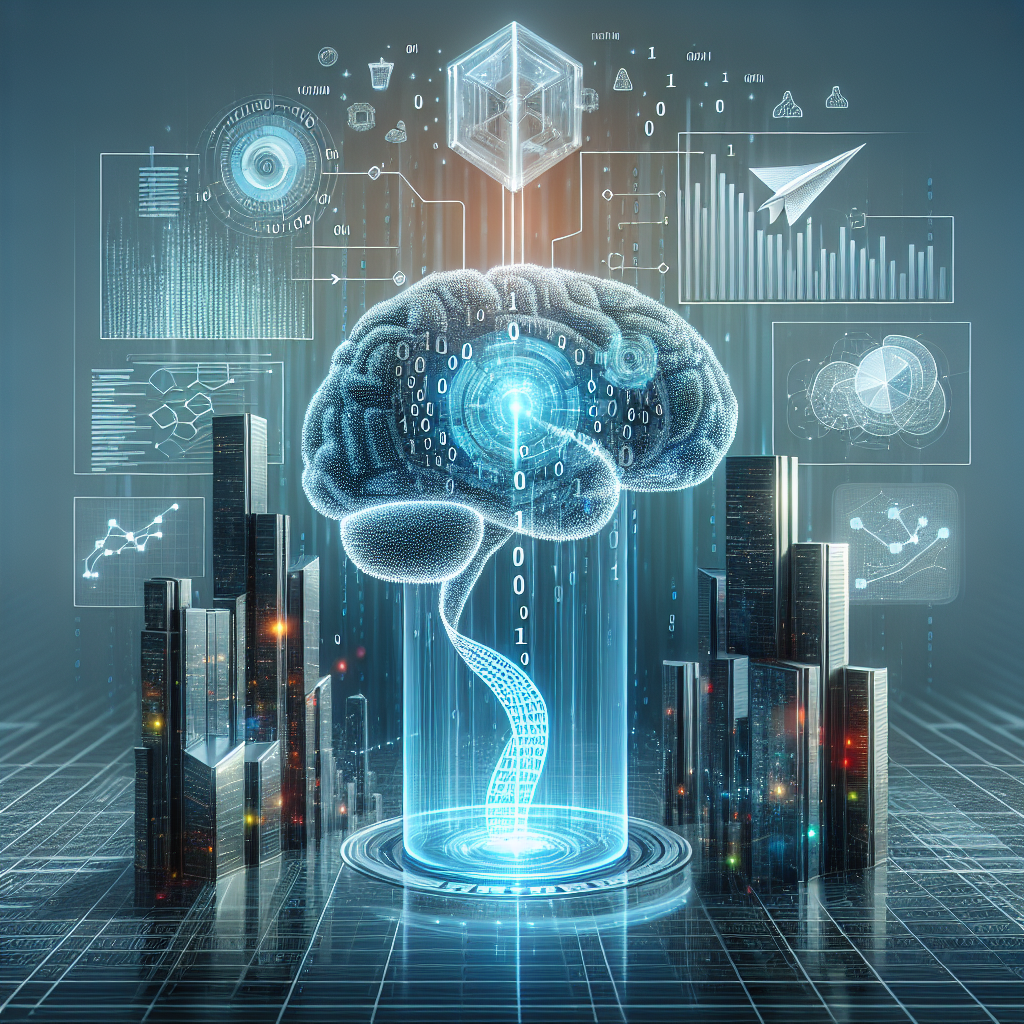The Future of Data Analysis with AI in Business Intelligence
In today’s digital age, data is king. Businesses are constantly collecting massive amounts of data from various sources, such as customer interactions, sales transactions, social media, and more. This data holds valuable insights that can help businesses make informed decisions, improve operations, and drive growth. However, the sheer volume of data can be overwhelming, making it difficult for businesses to extract meaningful insights.
This is where artificial intelligence (AI) comes in. AI-powered data analysis tools are revolutionizing the field of business intelligence, enabling businesses to automatically analyze large datasets, identify patterns, and make predictions. In this article, we will explore the future of data analysis with AI in business intelligence, and how it is reshaping the way companies make decisions.
The Role of AI in Data Analysis
AI refers to the simulation of human intelligence in machines, enabling them to perform tasks that typically require human intelligence, such as learning, reasoning, problem-solving, and decision-making. In the context of data analysis, AI algorithms can analyze vast amounts of data much faster and more accurately than humans, enabling businesses to uncover valuable insights that would have been missed otherwise.
One of the key advantages of AI-powered data analysis is its ability to identify patterns and trends in data that humans may not be able to see. AI algorithms can analyze data from multiple sources, such as structured data from databases and unstructured data from social media, to uncover correlations and relationships that can help businesses make better decisions.
AI-powered data analysis tools can also make predictions based on historical data, enabling businesses to forecast future trends and make proactive decisions. For example, AI algorithms can analyze sales data to predict future demand for a product, enabling businesses to optimize inventory levels and avoid stockouts.
The Future of Data Analysis with AI
The future of data analysis with AI in business intelligence is bright, with AI-powered tools becoming increasingly sophisticated and powerful. Here are some key trends that are shaping the future of data analysis with AI:
1. Deep Learning: Deep learning is a subset of AI that uses artificial neural networks to analyze data. Deep learning algorithms can automatically learn from data and improve their performance over time, enabling businesses to uncover complex patterns and insights in their data.
2. Natural Language Processing: Natural language processing (NLP) is a branch of AI that enables machines to understand and generate human language. NLP algorithms can analyze text data from emails, social media, and other sources to extract insights and sentiment analysis.
3. Real-time Analytics: AI-powered data analysis tools are becoming increasingly capable of analyzing data in real-time, enabling businesses to make decisions quickly and respond to changing market conditions. Real-time analytics can help businesses identify trends as they emerge and take immediate action.
4. Augmented Analytics: Augmented analytics is a new approach to data analysis that combines AI and human intelligence. Augmented analytics tools can automate data preparation, analysis, and visualization, enabling business users to easily uncover insights and make data-driven decisions.
5. Explainable AI: Explainable AI is a growing trend in AI research that aims to make AI algorithms more transparent and understandable. Explainable AI tools can help businesses understand how AI algorithms make decisions and provide insights into the factors influencing those decisions.
6. Automated Machine Learning: Automated machine learning (AutoML) is a new approach to building machine learning models that automates the process of model selection, hyperparameter tuning, and feature engineering. AutoML tools can help businesses quickly build and deploy machine learning models without requiring expertise in data science.
FAQs
Q: How can AI-powered data analysis tools benefit businesses?
A: AI-powered data analysis tools can help businesses uncover valuable insights in their data, make predictions, optimize processes, and drive growth. By automating data analysis tasks, AI tools can save time and resources, enabling businesses to make faster and more informed decisions.
Q: What are some examples of AI-powered data analysis applications?
A: Some examples of AI-powered data analysis applications include customer segmentation, churn prediction, fraud detection, sentiment analysis, demand forecasting, and recommendation systems. These applications can help businesses improve customer experience, reduce costs, and increase revenue.
Q: How can businesses leverage AI in their data analysis efforts?
A: Businesses can leverage AI in their data analysis efforts by investing in AI-powered data analysis tools, hiring data scientists and AI experts, and developing a data-driven culture within the organization. By embracing AI, businesses can unlock the full potential of their data and gain a competitive advantage in the market.
Q: What are the challenges of implementing AI in data analysis?
A: Some challenges of implementing AI in data analysis include data quality issues, lack of expertise in AI and data science, ethical and privacy concerns, and resistance to change within the organization. Overcoming these challenges requires a strategic approach to data analysis and a commitment to investing in AI technology and talent.
Q: What are some best practices for implementing AI in data analysis?
A: Some best practices for implementing AI in data analysis include defining clear business objectives, ensuring data quality and governance, building a diverse team of data scientists and AI experts, and continuously monitoring and evaluating the performance of AI algorithms. By following these best practices, businesses can maximize the value of AI in their data analysis efforts.

